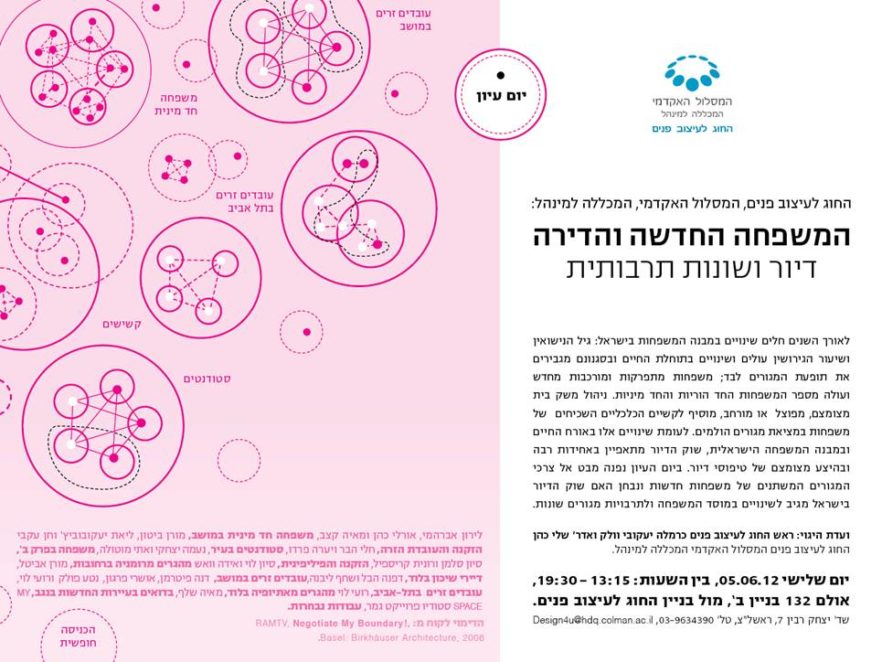In the course of the years, changes have taken place in the structures of families in Israel: the age of marriage and the rate of divorce are rising, and changes in the life expectancy and lifestyle are increasing the phenomenon of people who live by themselves; families are deconstructed and reconstructed and the number of single-parent and single-sex families is constantly rising. Managing a decreased, split or expanded household adds to the common economic difficulties that families face in their attempt to find appropriate housing. In this seminar we shall turn our gaze to the changing housing needs of new families, and examine whether the housing market in Israel is responding to changes that are taking place in the family institute, to the inhabitants’ changing needs and to various housing cultures.
Unlike the changes in the lifestyle and family structures, the housing market is characterized by great uniformity, which has been preserved despite the rise in level of life and housing standards, with the transition from building that was dominated by a public market in the first decades of the State of Israel to contractual building in the past decades. Several types of housing that have developed in the course of the years as a result of the combination of market forces and the planning authorities and planners are repeated in every part of Israel, with very small variations.
In the seminar’s Second Session we shall examine, from the housing supply, the housing complexes, the “Build Your Own Home” houses and the contractual apartments from the viewpoints of the architects, the law and the inhabitants.
The national and ethnic diversity of inhabitants in Israel also affects the housing culture. The seminar’s Third Session will discuss the way in which inhabitants from recent immigrations to Israel – immigrants from Easter Europe and Ethiopia, Asian work immigrants and Bedouins who have been concentrated in new towns in the Negev – use the standard housing that is available to them. What happens when the identity that is unique to these immigrants encounters the apartments that are typical of the housing market? Do immigrants preserve some of their original housing patterns in the everyday life in modern apartments?
The changes that stem from the family structure, from cultural variance and from the housing economy are joined by new winds that are blowing from the housing consumers themselves. Thus, after decades in which the planning of housing neighborhoods focused on expanding the residents’ private space, new voices that have arisen from the Housing Protest are now calling to increase the place of cooperation and community in the planning of housing. The Concluding Session will discuss the necessity of a policy that will encourage diversification in the planning of housing, and the role of the public and urban planning, as well as that of the market and of the designers, in advancing such policy.

